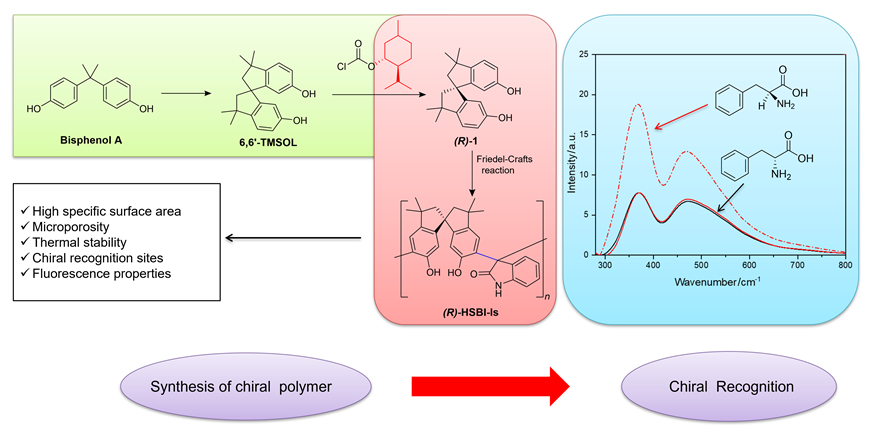| [1] |
Youatt, J. B.; Brown, R. D. Science 1981, 212, 1145.
pmid: 17815225
|
| [2] |
Maier, N. M.; Franco, P.; Lindner, W. J. Chromatogr. A 2001, 906, 3.
pmid: 11215893
|
| [3] |
Amako, Y.; Woo, C. M. Nat. Chem. 2019, 11, 1080.
doi: 10.1038/s41557-019-0380-0
pmid: 31758156
|
| [4] |
Teng, Y.; Gu, C.-L.; Chen, Z.-H.; Jiang, H.; Xiong, Y.; Liu, D.; Xiao, D. Chirality 2022, 34, 1094.
doi: 10.1002/chir.23453
pmid: 35676772
|
| [5] |
D'orazio, G.; Fanali, C.; Asensio-Ramos, M.; Fanali, S. TrAC, Trends Anal. Chem. 2017, 96, 151.
|
| [6] |
Abad-Gil, L.; Marina, M. L. J. Chromatogr. Open 2023, 4, 100099.
|
| [7] |
Scriba, G. K. E. J. Chromatogr. A 2016, 1467, 56.
|
| [8] |
(a) Zou, J.; Zhao, G.-Q.; Zhao, G.-L.; Yu, J.-G. Coord. Chem. Rev. 2022, 471, 214732.
|
|
(b) Niu, X.-H.; Yang, X.; Li, H.-X.; Liu, J.; Liu, Z.-Y.; Wang, K.-J. Microchim. Acta 2020, 187, 676.
|
| [9] |
(a) Lu, S.-Y.; Liang, Y.; Wang, L.-M.; Huang, S.; Xiao, Q. Spectrosc. Spectr. Anal. 2016, 36(S1), 10 (in Chinese).
|
|
(卢双燕, 梁瑜, 王鲁敏, 黄珊, 肖琦, 光谱学与光谱分析, 2016, 36(S1), 10.)
|
|
(b) Tian, X.-M.; Lin, Y.-Q.; Zhu, H.; Huang, C.; Zhu, B.-X. Acta Chim. Sinica 2023, 81, 20 (in Chinese).
|
|
(田小茂, 林悦群, 朱菡, 黄超, 朱必学, 化学学报, 2023, 81, 20.)
doi: 10.6023/A22090400
|
| [10] |
(a) Zhao, Y.; Liu, H.-L.; Sun, B.-G. Sens. Actuators, B 2022, 354, 131253.
|
|
(b) Chen, J.; Wang, Y.-T.; Yu, Y.-L.; Wang, J.-H.; Liu, J.-W.; Ihara, H.; Qiu, H.-D. Exploration 2023, 3, 20220144.
|
| [11] |
Chen, A.-L.; Zhong, Y.-J.; Yin, X.-H.; Li, R.-J.; Deng, Q.-F.; Yang, R. Sens. Actuators, B 2023, 393, 134262.
|
| [12] |
Anum, D.; Bwambok, D. K. J. Mol. Liq. 2023, 390, 123141.
|
| [13] |
Zhao, Y.-W.; Guo, L.-E.; Zhang, F.-Q.; Yao, J.; Zhang, X.-M. ACS Appl. Mater. Interfaces 2021, 13, 20821.
|
| [14] |
(a) Lu, Z.-Y.; Lu, X.-T.; Zhong, Y.-H.; Hu, Y.-F.; Li, G.-K.; Zhang, R.-K. Anal. Chim. Acta 2019, 1050, 146.
|
|
(b) Chen, L.-Y.; Tan, M.-X.; Jin, J.-N.; Zhang, Z.-B.; Huang, F.-H.; Li, S.-J.; Li, Y.-X. Chinese J. Org. Chem. 2024, 44, DOI: 10.6023/cjoc202401011 (in Chinese). |
|
(陈璐怡, 谭梦霞, 金迦南, 张子彬, 黄飞鹤, 李世军, 李云霞, 有机化学, 2024, 44, DOI: 10.6023/cjoc202401011.) |
| [15] |
Jafari, M.; Tashkhourian, J.; Absalan, G. Spectrochim. Acta, Part A 2017, 185, 77.
|
| [16] |
Wang, X.-B.; Guo, H.; Yu, C.; Jing, Y.-J.; Han, Z.-B.; Ma, X.-H.; Yang, C.-C.; Liu, M.-H.; Zhai, D.; Zheng, D.-Y.; Pan, Y.-P.; Li, X.-X.; Ding, K.-L. Macromolecules 2021, 54, 11180.
|
| [17] |
Weng, X.-L.; Baez, J. E.; Khiterer, M.; Hoe, M. Y.; Bao, Z.-B.; Shea, K. J. Angew. Chem. Int. Ed. 2015, 54, 11214.
|
| [18] |
Zhang, Q.-P.; Wang, Z.; Zhang, Z.-W.; Zhai, T.-L.; Chen, J.-J.; Ma, H.; Tan, B.-E.; Zhang, C. Angew. Chem. Int. Ed. 2021, 60, 12781.
|
| [19] |
Feizi, F.; Shamsipur, M.; Gholivand, M. B.; Taherpour, A.; Barati, A.; Shamsipur, H.; Mohajerani, E.; Budd, P. J. Mater. Chem. C 2020, 8, 13827.
|
| [20] |
Chen, W.-F.; Lin, H.-Y.; Dai, S.-A. Org. Lett. 2004, 6, 2341.
|
| [21] |
Zhu, Z.-Y.; Dong, H.; Li, K.-H.; Li, Q.-X.; Li, J.-X.; Ma, X.-H. Sep. Purif. Technol. 2021, 262, 118313.
|
| [22] |
Luo, H.-H.; Yang, F.; Li, C.; Zhong, Y.-F.; Cheng, C.; Wang, S.-L.; Jin, S.-B. Chem. Eng. J. 2023, 476, 146611.
|
| [23] |
(a) Xu, C.-M.; Qi, Y.-S.; Yang, X.-S.; Li, X.-F.; Li, Z.-P.; Bai, L. Org. Lett. 2021, 23, 2890.
|
|
(b) Lin, X.-F.; Yao, L.-X.; Chang, S.-R.; Wang, L. CN108659041A, 2017 [Chem. Abstr. 2017, 169, 526105] (in Chinese).
|
|
(林旭锋, 姚林曦, 常时瑞, 王雷, CN108659041A, 2017, [Chem. Abstr. 2017, 169, 526105].)
|
 ), 陈强d, 王新波a,*(
), 陈强d, 王新波a,*( )
)
 ), Qiang Chend, Xinbo Wanga,*(
), Qiang Chend, Xinbo Wanga,*( )
)
